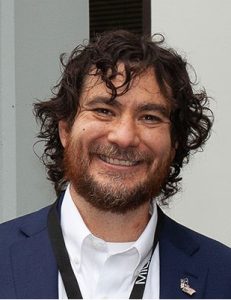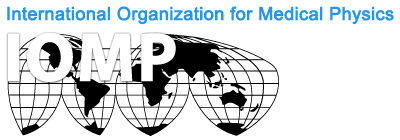IOMP Webinar: Micro-X CNT Emitters, X-ray Tubes, and Unique Imaging Applications
Tuesday, 25th April 2023 at 12 pm GMT; Duration 1 hour
NEW: CME/CPD credit point shall be awarded for participation in the webinar in full.
To check the corresponding time in your country please check this link:
https://greenwichmeantime.com/time-gadgets/time-zone-converter/
Organizer: Eva Bezak, IOMP
Moderator: Eva Bezak, IOMP
Speaker: Brian Gonzales, PhD
 Brian is the Chief Scientist of Micro-X and the CEO of Micro-X Inc, the US subsidiary. Brian has a Ph.D. in biomedical engineering from UNC and NC State University and has published in multiple peer-reviewed scientific journals, focused on X-ray Computed Tomography using carbon nanotube (CNT) X-ray technology. Brian has worked with carbon nanotube X-ray technology from the early research at UNC, then lead early development of the technology at XinRay Systems, and then assisting in the transition to full commercialization of the technology at Micro-X in partnership with Flinders University and the University of Melbourne in Australia.
Brian is the Chief Scientist of Micro-X and the CEO of Micro-X Inc, the US subsidiary. Brian has a Ph.D. in biomedical engineering from UNC and NC State University and has published in multiple peer-reviewed scientific journals, focused on X-ray Computed Tomography using carbon nanotube (CNT) X-ray technology. Brian has worked with carbon nanotube X-ray technology from the early research at UNC, then lead early development of the technology at XinRay Systems, and then assisting in the transition to full commercialization of the technology at Micro-X in partnership with Flinders University and the University of Melbourne in Australia.
Abstract:
Micro-X has successfully developed the world’s first carbon nanotube (CNT) based x-ray tube for medical applications. This unique technology achieves both the high x-ray current, and the stable x-ray output required for safe and effective medical imaging. The performance of Micro-X CNT tubes is achieved through two patented design features of the CNT emitter that differentiate the emitter for other field-emission emitters. In this presentation, Micro-X will present an overview of the emitter design and share emitter data demonstrating the high current and stable performance.
CNT x-rays are smaller and simpler compared to conventional x-ray tubes. CNT x-ray tubes are controlled by direct electronic voltage instead of the indirect thermionic control of conventional x-ray. These differences enable new imaging systems to be developed. In this presentation, Micro-X will overview the four different products Micro-X has designed taking advantage of the advantages of the CNT x-ray. This includes a lightweight mobile digital x-ray imaging system to bring x-ray directly to a patient bedside, an x-ray camera that creates two-dimensional x-ray backscatter images with the x-ray source and detector on a single side, a compact lightweight CT for early diagnosis of stroke, and a reimaged airport checkpoint based around a miniaturized CT baggage scanner.
